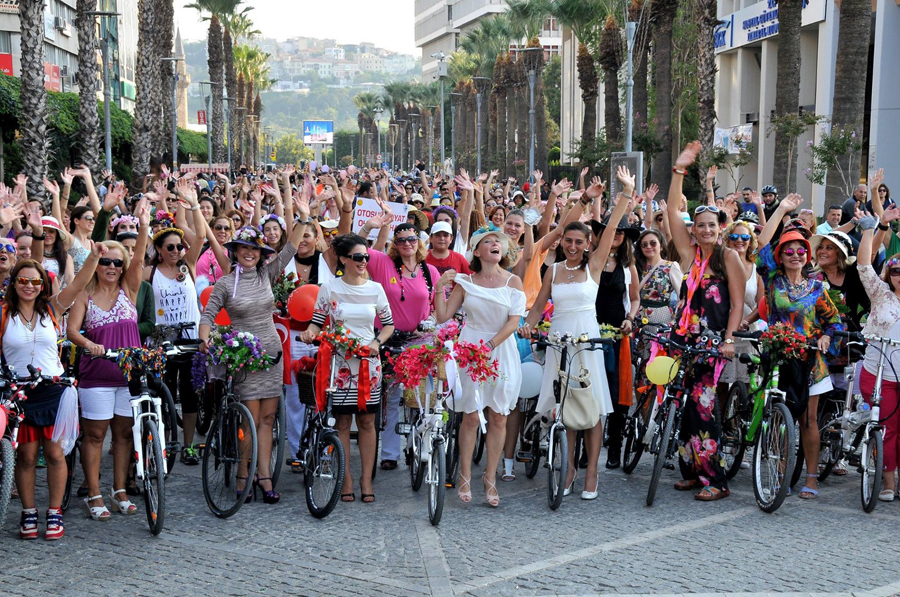
Ephemera
Smyrna / Izmir cyclists
The bicycle in its modern form with its pneumatic tyre was invented in 1888 by John Dunlop and this allowed for much smoother rides and allowing its spread for pleasure not just transportation. It was around the same time (1878) when Bicycle Touring Clubs were established in England and elsewhere. Like in other aspects Levantines were the conduit for the transfer to Ottoman lands of this new invention and pleasure.
There have been some studies on the history of cycling and this article notes many firsts where Levantines led the way, including the first date when bicycles were seen in Smyrna was 1885, first bicycle race took place 15 May 1895 where of the 6 races, 5 were won by a ‘Petrice’ from Karşıyaka / Cordelio. The first inter-city bicycle race organised by Smyrna Levantines took place in 1897, and documents show the Bornova Levantines started organising their own sporting championships from the beginning of 20th century of which cycling was also one of the events. Later the local Greek community organised the Panionian Games held in Bournabat regularly where again cycling was one of the activities.
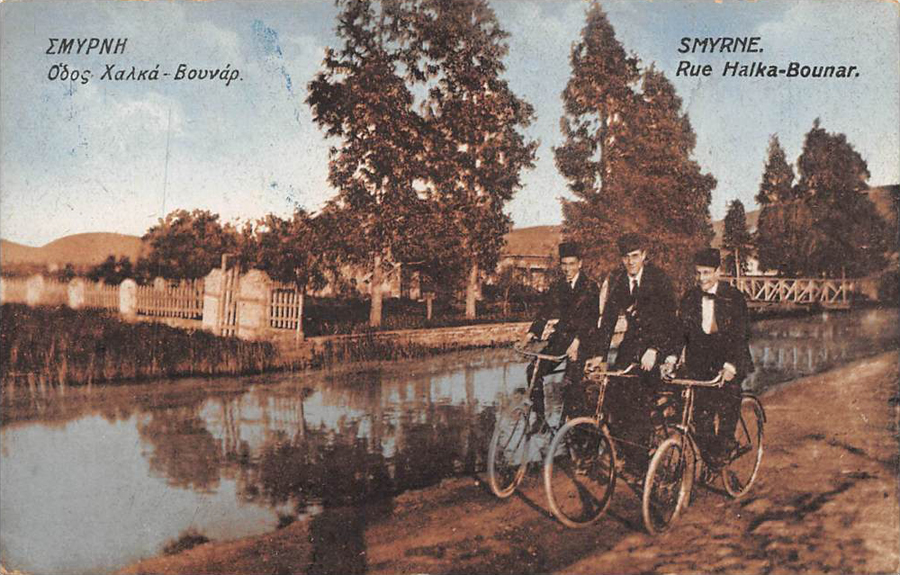
A trio of cyclists from a similar era though the bikes are slightly different in style, smaller wheels and mud-guards at the then pleasure area of Smyrna, Halkapınar.
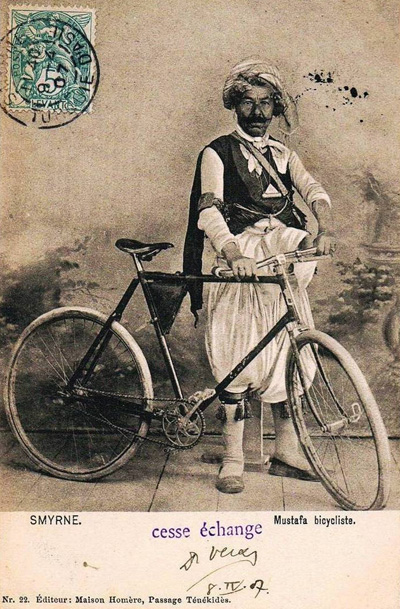
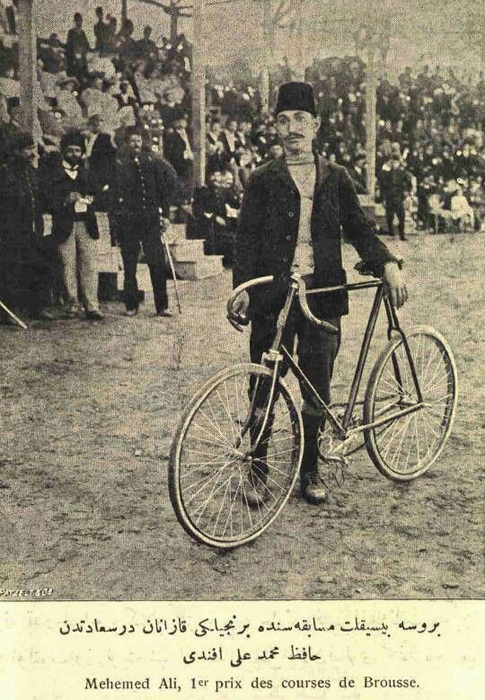
It appears the sport spread in geography and communities fast, as this competition winner from that era from Bursa shows.
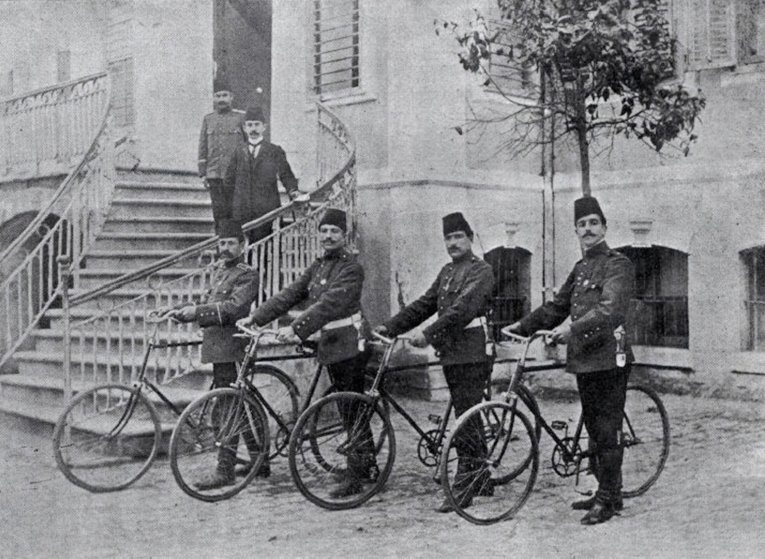
The vehicle also taken up by the Ottoman authorities for duties: detachment of police of Adana on bicycles.
Izmir continues to lead the trend in cycling in a different era and remit. In 2013 Sema Gür, an Izmir history teacher and late bloomer in cycling started a movement through a Facebook post: “As I started cycling, I saw how male-dominated the whole thing was,” Sema told a conference at the Aegean University. “The routes chosen, the lycra clothes, the soberness of bikes… So I decided that I would wear skirts, put flowers on my bike and create a movement that encourages women to cycle on their terms, with their idea of aesthetics. I put the idea of having a ‘Chic Women’s Bicycle Tour’ on Facebook, not sure whether it would take off. 600 women signed up and 300 showed up.” Since then the movement has grown and spread to many other cities in Turkey that campaigns in the softest possible terms to increase cycle routes and their website states the ‘chic’ aspect is to get the attention of municipalities and ministries for this end. There is of course a subtext of feminist and liberal campaigning element within that group ride and Izmir has always considered itself the most Westernised city in Turkey and perhaps this is a lasting Levantine legacy that still resonates long after the majority of that population has moved on.

